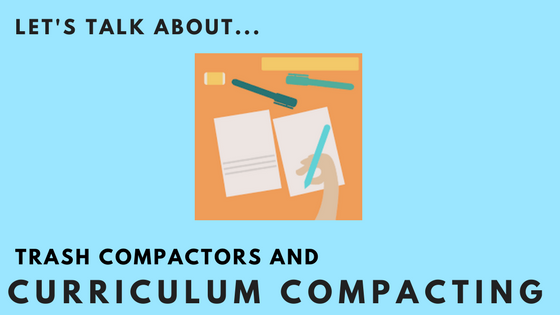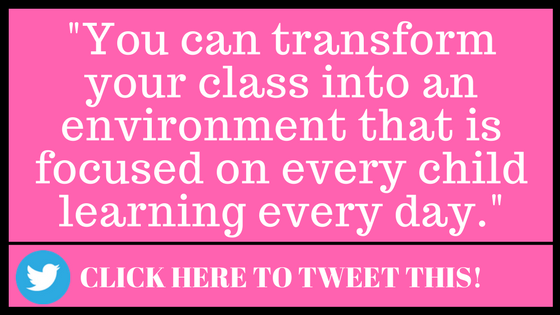What does a trash compactor have to do with curriculum compacting?
(Well, isn’t that an odd way to start an educational blog?)
In pondering how I was going to explain curriculum compacting to you, I started thinking about trash compactors. If your name is Luke and you have a special connection to the force, you may be more familiar with this as a reference. Or, if you have had children under the age of ten (or contact with said children) at any time in the last nine years, you are probably very familiar with the delightful space adventuring trash compactor named Wall-E.

No matter your familiarity (or lack thereof) with trash compactors, all of you can use your understanding of the term to help you make sense of what curriculum compacting is (this article, Part 1 of a 3 part series), how it helps students of high ability or achievement (Part 2), and what you need to do to be successful with it in your own classroom (Part 3).
Before we can get into the how and why of compacting your curriculum, let’s look at what it is.
Just as a trash compactor eliminates wasted space by squishing together trash, as educators, we can do the same for our students when it comes to our curriculum. When we examine the standards our students need to master and identify the learning targets that will demonstrate this mastery, a natural next step is to create pre and post assessments for these standards. This is, in fact, a process that many districts already undertake in an effort to collect accurate data about student growth and achievement.
However, this is where the process stops for many educators. We give a pre test, compare it to the post test, and analyze our instructional strategies and the impact they have on student growth. What we are missing when we do this, however, is a perfect opportunity to become valuable trash compactors for our students.
Cut the Fluff
The opportunity that we have- one that many educators unfortunately do not take- is to examine this preassessment data and determine what students can bypass which learning targets because they have already mastered them. Curriculum compacting is simply taking a set of standards and learning targets, eliminating the ones students already know, and spending your students’ valuable class time on material they actually need to learn, not material they already know.
By utilizing curriculum compacting in your classroom, you can transform your class into an environment that is focused on every child learning every day. One that does not waste time on ineffective learning experiences. One that acknowledges, and respects, students’ prior knowledge. One that meets the needs of your students where they are, not where the pacing guide says they should be. By eliminating the content in your lesson plans and units that does not move a child forward, you can focus your time and instruction on learning and growth every day.
Become the trash compactor for you students.
Be like Wall-e.
Next Steps
Now that you have some idea of what being a teacher trash compactor looks like, we will dive into the why and how of curriculum compacting. Next, we’ll examine why curriculum compacting is the answer to the varied needs of your special education and gifted students (part 2 of this series). Then, let’s look at the steps you need to take and the strategies you need to learn to make this happen in your own class (part 3 of the series).




